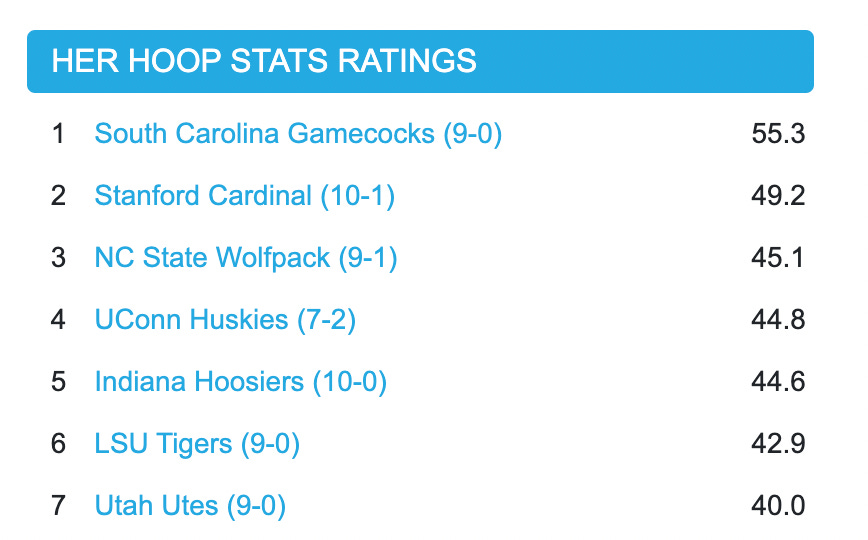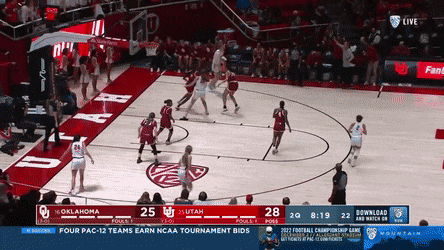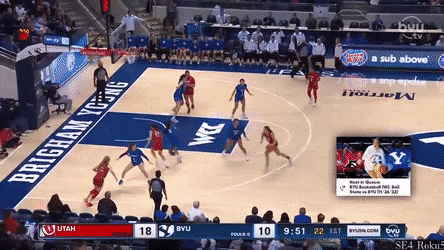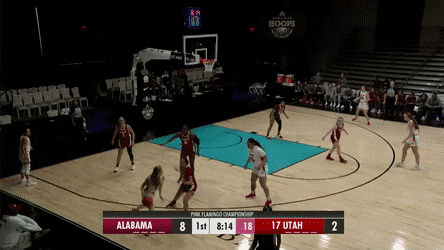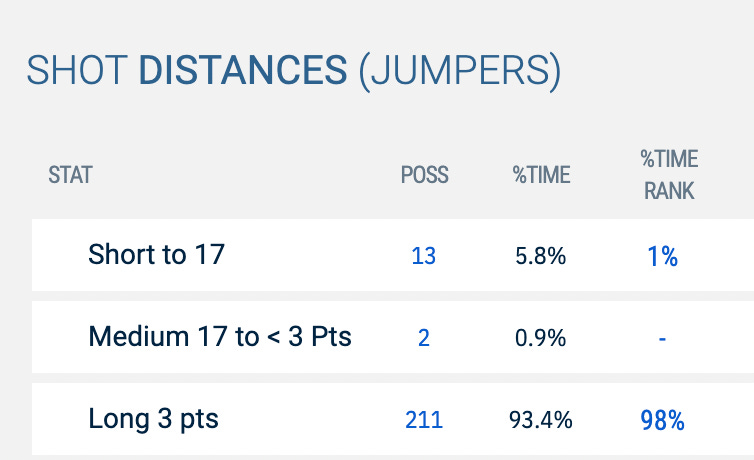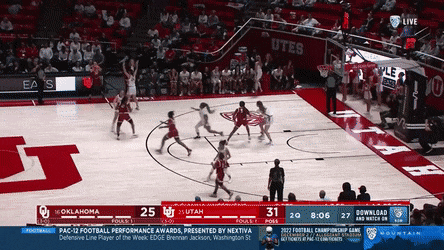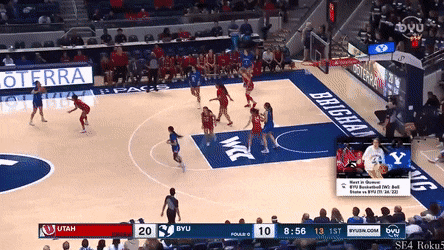NCAA Weekly, Vol. 6.2: Alissa Pili and the Utah Utes are must-watch basketball
scoring points = good and fun, says Utah
I’m very bad at paying attention to the best stories in women’s basketball compared to the best teams. The way it’s covered nationally makes that part easy, but it’s still on me to do the work. Logging onto the wonderful Her Hoop Stats this year has more or less reinforced what I expected to see heading into the season. The top six teams, as of writing, are South Carolina (last year’s champion), Stanford (perennial Final Four team), NC State, UConn, the surging Indiana, and Kim Mulkey’s LSU.
Oh, and seventh is Utah.
Wait, what?
As strange as it is, and while the obvious caveat of Utah’s schedule thus far is that it’s not on the level of a UConn or South Carolina, it all seems pretty real. Utah has drawn three opponents ranked in the HHS top 50 and a fourth (BYU) ranked inside the top 80; they’ve dispensed of these opponents by a combined 72 points, or 24 above what would’ve been expected by pregame spreads. They’ve scored 90+ points in half of their games, and their worst offensive performance of the season still saw a 1.062 PPP.
Also, their defense might be pretty good. Again, Utah’s drawn four opponents in the HHS top 70 offensively, including #24 Oklahoma; none of them had an offensive performance above their season average. It’s a team that wins the turnover battle nearly every night, always out-shoots their opponent, and appears pretty stout on the boards, too.
How did we get here? How did we get to a world in which Utah - a school with one Elite Eight (2006) and one Sweet Sixteen (2001) run - is a legitimate top 10 team with Final Four aspirations? How did we get here so quickly after these ladies went 5-16 in the COVID season and, prior to 2021-22, hadn’t posted a winning record in conference play in 11 seasons? It starts with a lot of good passing, a roster growing up way ahead of schedule, a dominant low-post player, and a defense that presses like crazy while forcing opponents into a difficult array of shots.
Simple as that, really. Oh, and a coach that’s shifted both offensive and defensive philosophy to best fit her roster.
Normally these are paywalled, but I thought this one might be a good one to toss out to the public. Subscribe if you’re so inclined.
Smart, mistake-free offense
I’ve had the chance to sample four games from Utah’s season (the four previously mentioned). The thing that immediately would stand out to…I don’t know, basically everyone, is that these Utes almost never turn the ball over. HHS ranks the Utes #1 in America in assists per game (21.0) and #4 in assist/turnover ratio (1.56). As a comparison, if you’re more familiar with the men’s game, the leader in this last year was Arizona. You remember Arizona.
The fascinating thing about Utah is that nearly every member of their rotation moves the ball well. Five players have an Assist Rate of 17% or better. Three of the five starters are at a 2.0 assist/turnover ratio or better. The team’s best passer could be guard Ines Vieira (4.8 APG), who’s done a very good job in finding open shooters and cutters in this space-heavy offense:
But it also might be the team’s best player, period. Alissa Pili (20.9 PPG, 6.4 RPG, 2.0 APG) is posting numbers that we very rarely see at any level of basketball. Also, she’s posting those numbers in all of 23.4 minutes per game. It’s a literal one-of-one season in recent memory in women’s college hoops.
Pili is a dominant force in the post; as evidenced by that 75% hit rate on twos, she’s killing it down low. But the attention she draws has enabled her to post the second-highest Assist Rate on Utah’s roster. Per Hoop-Explorer, Utah’s Assist Rate is 10th-highest in America when she’s on the court, and Utah as an offense is hitting 71.9% of their twos. Watch how the defense collapses on Pili on this drive to the basket, a play that ends with FOUR defenders on her as she spots a wide-open Gianna Kneepkens in the corner.
This is simply a deeply smart offense. Against Oklahoma, the best defense they’ve played so far, the team completely shredded a very good defense, posting 33 assists to 8 turnovers. Even in a more struggle-filled match with Alabama, they still managed to get 20 assists on 30 made shots. It’s a very, very clean offense. This may help explain our next section.
Paint pulverization
So: about that 71.9%. That’s just part of an overall 64.9% 2PT%, which is the best in the nation. Has Utah faced the toughest schedule out there? No. Does it matter? Also no. Even against an alright schedule, that level of production is remarkable, and it’s still come against four Top 100 defenses. Against those opponents, Utah went 69.8% on twos, which is, you know, absolutely insane. Unsurprisingly, a lot of this rides on Pili, who has turned into a truly astounding threat down low. Pili is shooting a hilarious 71% from the field on post-ups, which is one of the best rates in men’s or women’s basketball.
It’s not just Pili, of course. Of Utah’s main nine-player rotation, seven have 10 or more makes at the rim, with four players being at 16 or higher. Per Synergy, only two teams in the women’s game - Notre Dame and South Carolina - get more points per game at the rim, and neither is as efficient in doing so as Utah. It’s a fairly unprecedented combination of volume and efficiency down low, which wasn’t always the case.
In that COVID season of 2020-2021, Utah shot just 47.4% at the rim and got just 23 attempts per game down low, per Synergy. Even last year, they weren’t quite like this: 54.1% FG% at the rim, 26 attempts per game at the rim. In 2022-23? 65.3% FG%, 33.1 attempts per game. This is a real philosophical shift, driven in part by Pili but also by an overall insistence to never settle for a runner/two-point jumper and simply continue finding ways to get those extra 2-3 feet closer to the rim.
Unsurprisingly, the bulk of Utah’s paint points come in transition and on post-ups. However, they’ve been the best team in America at scoring on spot-ups, both from deep and from inside the arc. Two players share key responsibility here: Pili, of course, and former Top 100 recruit Jenna Johnson (11.8 PPG, 6.0 RPG), a fearless driver who uses her 6’2” frame and unique combo guard/forward skillset to burn opponents from just about anywhere.
Because of how hard and how often Utah attacks the paint, they’re generating the 10th-highest Free Throw Rate in the sport. Couple that with the historic efficiency on two-pointers and you’ve got an offense that’s near-impossible to slow down in the paint. What about from deep?
Also, threes
So: we need to cover something pretty important here. Below is data from Hoop-Explorer:
And below is similar data from Synergy.
Anything about that stand out to you? Anything at all? This is a team that, as of 2020-21, was still getting about 21% of its shots from non-rim two-pointer land. We’ll see if it holds up once conference play begins, but the Utes are fully, completely committed to their own brand of rim-and-three. Only one team in Hoop-Explorer’s database takes fewer non-rim twos, and just 15 mid-range jumpers through eight games is frankly pretty wild.
However, it’s defensible. We know that the Utes are crushing it at the rim, but the Synergy data also shows a team that’s very good, but maybe not elite at jump shooting. What do you do with a team like this? Maximize the value of the shot itself. Utah’s three-point attempt rate of 40.8% is among the upper echelon of women’s college hoops. Their hit rate of 35.1% sits 60th among the 361 D-1 teams. Because of all the attention paid to the paint, they generate more open catch-and-shoot threes per game than 83% of other college teams. Anytime teams let Gianna Kneepkens (14.9 PPG) get a three off, it’s a bad idea.
Kneepkens is shooting a hilarious 51% from deep and sits over 41% for her career, making her one of the most dangerous shooters in the sport. This is truly a team that can torch you from all over; I like watching them play basketball.
Full-court press, no threes allowed
Of the two main units, Utah’s offense is unquestionably more impressive and the key reason they look better than ever before. However, it’s worth paying attention to what they do defensively as well, because it’s a pretty entertaining thing to watch. You’ll see Utah press after a lot of made baskets, and when it’s working properly, you’ll see it force a pretty high amount of turnovers. Synergy has 29% of all possessions against this Utah press ending in turnovers, which is…you know, a large number.
I find what they’re doing in half-court probably more exciting, though. Press defense is a little bigger part of the women’s game than the men’s, and Utah’s 29% TO% in press only ranks 36th-best of the 59 women’s teams who press for 15+ possessions a game. Instead, their defensive closeouts are what stood out to me while watching. Per Hoop-Explorer, only 13 of the 94 Big Six (+AAC) teams out there force more mid-range twos, with only 15 teams allowing fewer threes.
Utah works overtime to eliminate catch-and-shoot threes in particular. Per Synergy, just 54% of the jumpers they allow are of the catch-and-shoot variety, which is tied for the 24th-lowest percentage in the sport. Crazier yet is that Utah only gives up seven unguarded catch-and-shoots per game. This may not sound that impressive, but it needs context. Utah forces 30.1 jumpers per game; this means that just 23% of the shots they allow are objectively good ones that don’t require immense contextual digging.
Because Utah also has the size that’s so effective on offense, they force a ton of runners as well. What Utah runs is mostly man-to-man, but they switch fairly effectively and force a lot of bad shots. When adding in runners and hook shots, opponents are shooting 30.9% on mid-range twos against this team, and those shots are nearly 36% of what the Utes give up.
This is a defense that’s wholly committed to making the most of what they’ve got, forcing the worst shot selection possible, and doing it all with a total of one (1) former Top 100 recruit on their roster. They’re fascinating, fun, and seemingly pretty real.
As usual, a disclaimer: this is a long season. Whatever ends up happening to this team, I can’t say I know of for certain. If Her Hoop Stats believes they’re a top-7 team in the country and most metrics systems have them top-10, I have no reason to believe (as of now) that it won’t sustain itself.
Still, there are cracks. Utah ranks 246th in fouls committed per game, and the main reason why elite player Pili - the fourth-most impactful player in the women’s game by Win Shares per 40 Minutes - isn’t in more often is because she commits a brutal 5.8 fouls per 40. They don’t have much in the way of elite rim protection. As good as they likely are, they still haven’t entered a game that’s close to a coin-flip or worse on paper; they’re unlikely to play a game against a Top 25 opponent until mid-January.
Yet I’m pretty confident these folks are really good, and if nothing else, they’re deeply entertaining. Utah plays the most attractive style of basketball I’ve seen in the women’s game this season. HHS projects their expected final record at a hilarious 25-4 (14-4 Pac-12), and as of the time of writing, they were ranked 13th in the women’s AP Poll.
That last one is important. Utah’s never - at any point - touched the AP Top 10. Their peak was #11 in 1998, and they haven’t finished a season ranked in the AP Poll since 2007-08. If any year is likely to produce that for them, it seems 2022-23 is the one. Utah is a 75% or better favorite (per HHS) in its next eight games; if they can win all eight, they’ll be 17-0, 6-0 Pac-12, headed to play current #2 Stanford in what might be a legitimate Game of the Year contender to that point. I frankly hope they do it; new blood at the top of any sport is always welcome.




